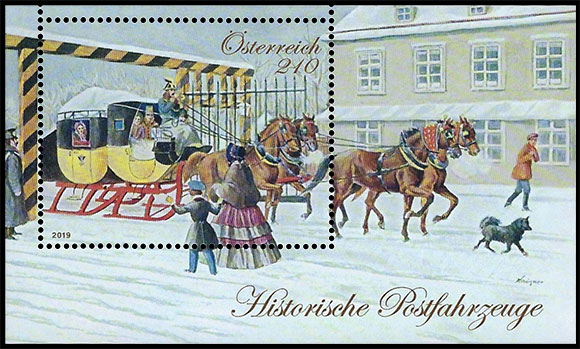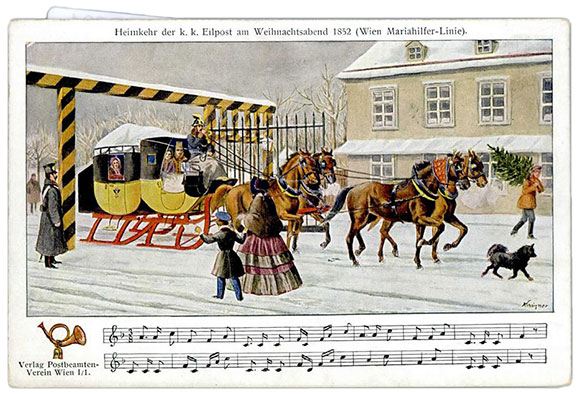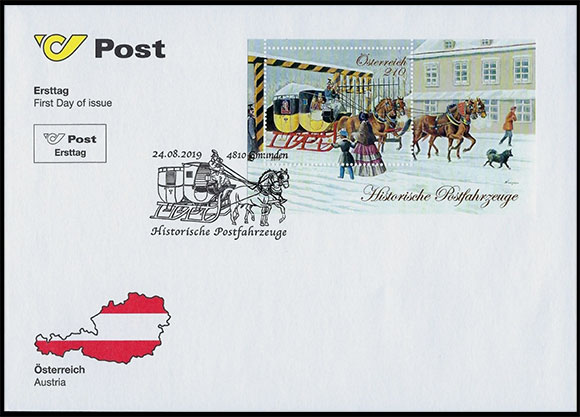
On August 24, 2019, Austrian Post issued another block from the series "The history of postal transport."
This year’s mini sheet from the popular series shows a Royaland Imperial Express coach just arriving in Vienna, set against a wintry backdrop.
The k.k. Eilpost (Royal and Imperial Express Mail) was founded in 1823 based on the English model. The first routes ran from Vienna to Brno, Prague and Pressburg with Graz and other important cities being added from 1824 on. The coaches were pulled by four horses and were designed to transport up to twelve passengers. The 19 postal miles from Vienna to Brno (today around 140 kilometres by road) could thus be covered in 14 hours, including a one hour break.
Before starting on a journey with the express, a coach booking certificate and an entry ticket had to be redeemed. However, the advent of the railway ultimately led to the demise of the express mail coach for passengers.

The mini sheet shows a design from a postcard from the year 1852. The postillion on the box is announcing the coach's arrival in Vienna on his post horn. The express mail, equipped for the winter with runners in place of wheels, is passing through the gate of the Mariahilf Line, which can be recognised by the black and gold beams and iron grille.
By the way, did you notice that a man walking along a house on a souvenir sheet lost his Christmas tree?
Mariahilfer Straße was once a postal route used to convey both items of mail and passengers. In 1704 Emperor Leopold I ordered the building of a defensive fortification, the Linienwall, which enclosed the city in a semi-circle stretching from the Danube Canal at St. Marx to Lichtental in today’s 9th district. This was initially an earthen rampart with ditches, but was later fortified with bricks. Entrance gates and offices were set up on the majorroads, constituting the “line”, where tolls were collected and, from 1829, also the consumption tax for the food brought into the city. The Mariahilf Line mentioned above was one of these.

Перейти в каталог


